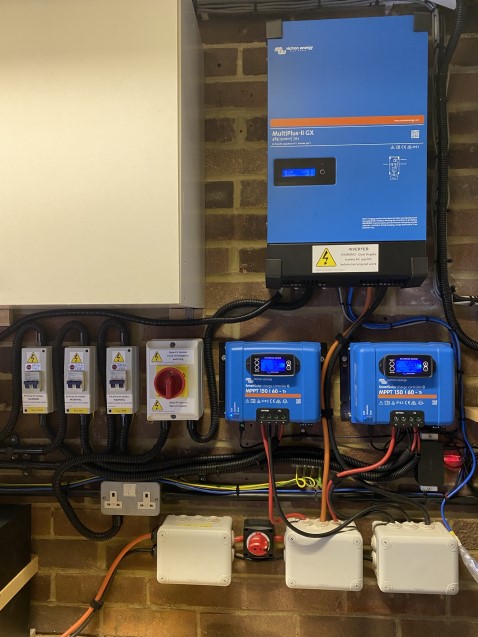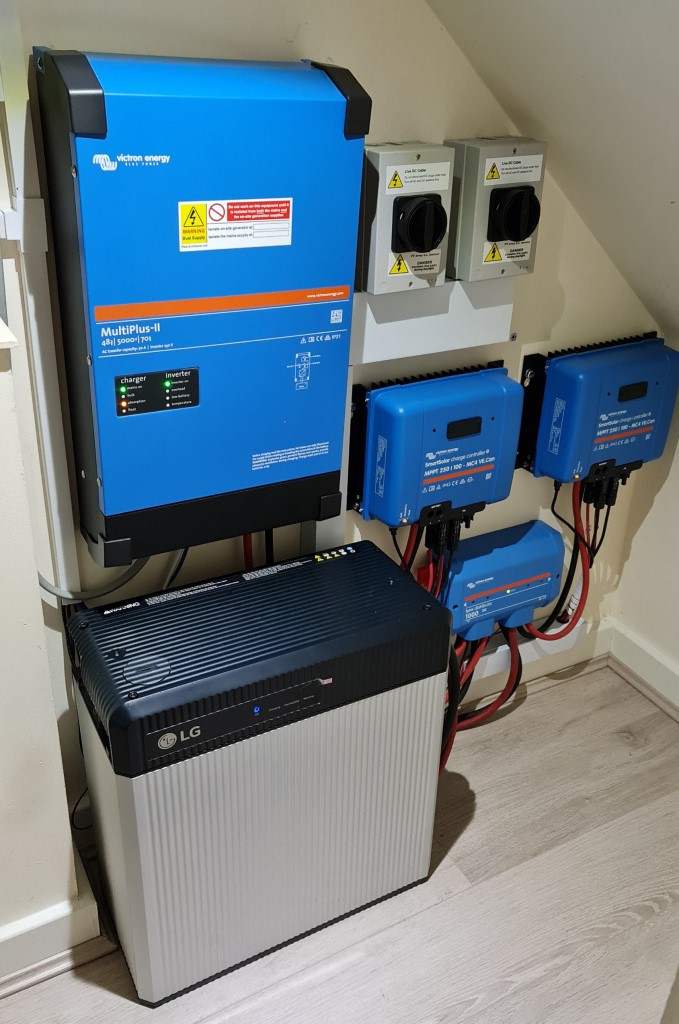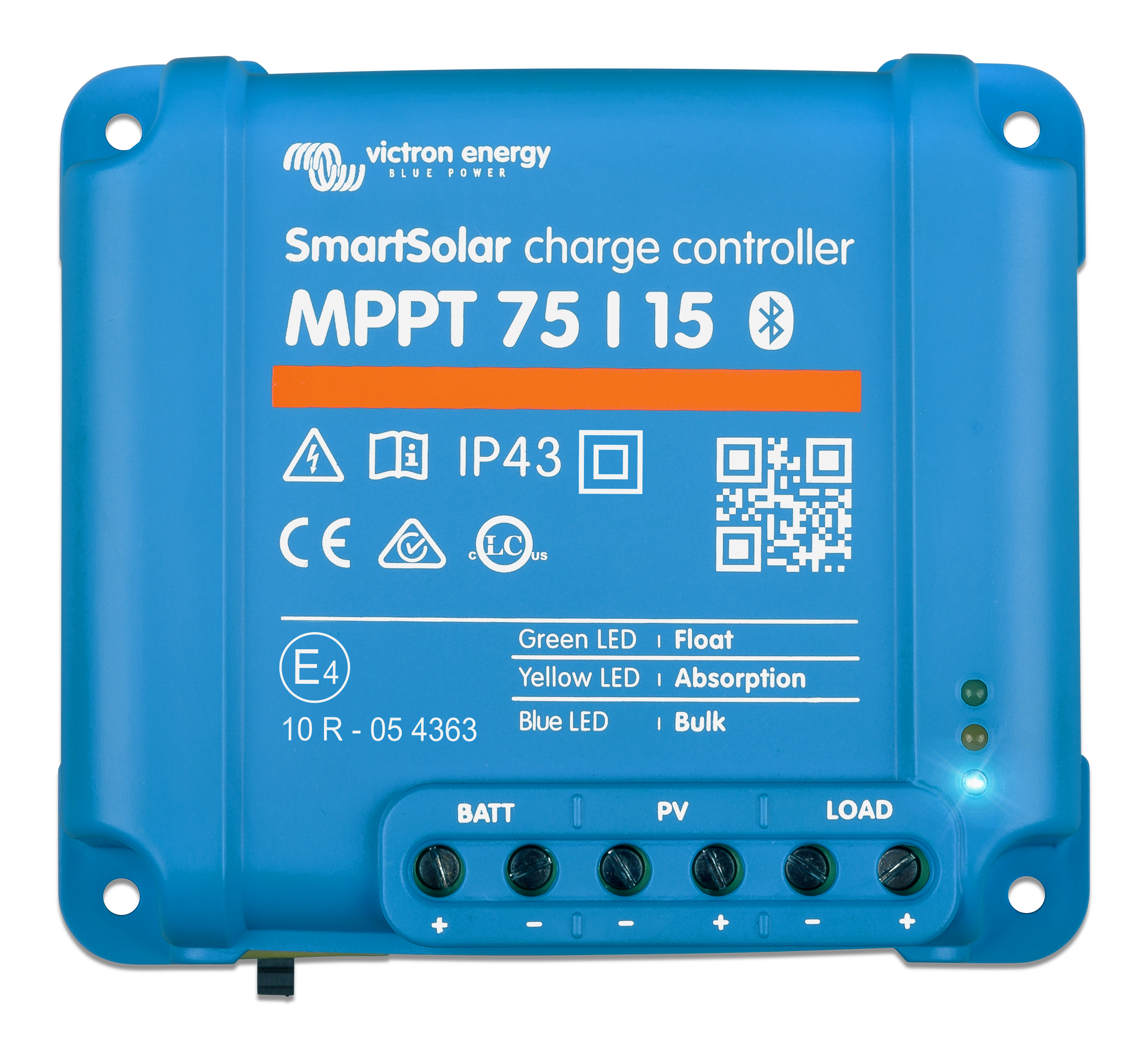Solar DIY considerations (electrical, batteries and charge controllers)
In the following section I will briefly touch on the below topics given much has already been written elsewhere on all of them. As always I will strongly advise that you involve your local building authority or professional installers if you are uncertain of anything. I am a big supporter of DIY, but I cannot stress enough that if things are not done properly, lives could be put at risk, household insurance claims declared invalid and you may even be prosecuted for having illegally done notifiable electrical work.
DIY electrical work (Extreme Caution advised)
- If you intend to sell your energy back to the grid, DIY is not for you as you require either an Orbiflex or MCS registered installer to register the system and provide you with a certificate, which your supplier will want when you sign up to SEG with them.
- Competent (make sure you have looked up the official IET definition) DIY'ers can typically install a system if there is an existing spare circuit with an switch of the required capacity.You cannot install the equipment off a spur. It must be a dedicated circuit with dual pole isolation and overload protection.
- Ensure you have the proper tools and knowledge to measure and test the installation for commissioning, ensure correct earthing and that the existing circuit is adequate to handle the loads of the system when charging and discharging etc.
- Even if a new circuit is required, a competent DIY'er can do the installation, BUT it cannot be commissioned until it has been tested and signed off by a qualified electrician or a local building inspector. Engage either and agree the work you will do prior to doing any notifiable work as nobody cannot legally sign-off something they have not done or cannot physically inspect to have been done to standard, such as wiring hidden in a cavity wall.
- All work carried out must comply with the latest building Part P regulations and even non-notifiable installations should be adequately tested before commissioning. NOTE - There are differences between Part P in Wales and the UK e.g. in Wales a solar panel installation has to be signed off and commissioned by a qualified electrician. Always check for the latest rules at the "source of the truth", which social media platform seldomly are.
- A lockable mains isolation switch (disconnecting both L and N) has to be installed between the equipment and mains supply.
- The necessary warning labels and system diagram should be clearly displayed on the equipment associated with the installation. Imagine trying to tell someone else how to quickly disconnect and isolate the system components and doing this over the phone or an electrician having to do this in your absence.
- Always seek professional advice if you are uncertain as people's lives could be put at risk, home insurance policies invalidated or legal action result in the case of notifiable work being carried out and commissioned by unauthorised persons.

ESS battery basics
NMC and LifePO4 batteries are the most common and safest battery chemistries found in domestic ESS systems. LG and Tesla use NMC cells, although there currently is a drive to reduce the dependency on cobalt and also eliminate cobalt content so batteries will continue to evolve and we may see sodium and LTO becoming more prevalent in the future as they are hailed safer and more environmentally friendly.
When opting to mix products from various manufacturers, ensure where e.g. canbus communications protocols are implemented, the equipment can actually be used together. Smart batteries today provide vital charging and discharging parameters to the system which ensure safe operation and the necessary protection for the batteries. While you may still be able to use the batteries, keep-alive signals and the lack of battery information sharing with teh system may see you with a less optimal system.
Many of the mainstream batteries are often customised OEM products from large manufacturers or use components produced by them, BYD, Pylontech and others are very much world leaders in producing high quality and also affordable batteries. Even Tesla powerwall today relied on LG for cells to make up the big shortfall in output from the US and other giga factories.
Home batteries are not all suited to prolonged periods of off-grid or backup use and warranties may be invalidated if not used correctly. Therefore, pay particular attention to and respect the nominal charging/discharging and DOD parameters when sizing your system. Manufacturers will often even have a specific clause to highlight this.
There may be limitations to the number of batteries (overall capacity) that can be combined in a single system, so plan accordingly. As an example, the generation II LG RESU series allows only two units to be connected together e.g. the RESU13 can therefore only offer a maximum 24kW of usable power when coupled with another unit.
When used according to the manufacturer's recommendations, modern batteries can be expected to still provide between 60-80% of their original capacity after 10-years. Unlike e.g. AGM chemistries, a modern smart LifePO4 battery bank's capacity can often be extended by adding more capacity at any time, but do check with the manufacturer/supplier as some newer hardware may not be backward compatible and discontinued products can derail those long term upgrade plans you had.
Retrofitted batteries are typically AC coupled with an integrated inverter.
Hybrid inverters will have MPPT chargers, which are DC-DC charging (PV to the batteries) with no conversion and typically offers the highest, often up to 98%, charging efficiency. A battery will also be connected directly to the same system.
While all changes to an existing grid connected system requires either a DNO notification or approval, increasing DC coupled battery capacity won't typically impact the existing G98/G99 certification, whereas an AC coupled battery will as a rule of thumb require a G99 approval given the increased total combined capacity of both systems.

What size MPPT?
I strongly recommend using a sizing calculator, such as this one, MPPT sizing calulator, found on the Victron website, to ensure maximum and minimum temperatures, voltage drop and other important parameters are correctly taken into acccount.
As a simple guideline, always ensure the total VOC does not exceed that for which the MPPT was designed with some margin to allow for min and maximum temperature operation. As example, Victron's popular Smartsolar MPPT 75/15, the 75 indicates the maximum input voltage from the panels that should never be exceeded at any temperature. The VOC information you get from the panel's specification label or documentation.

The 15 indicates the MPPT's output in Amp. Depending on the temperature, the MPPT output may be limited to this value if you e.g. oversized the panels or under extreme low temperature conditions and this is why it is highly adviseable to use a calculator like this to design the optimal system.
